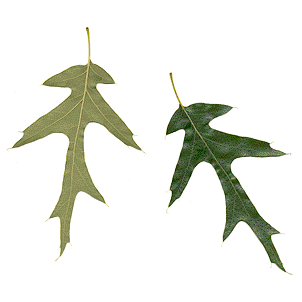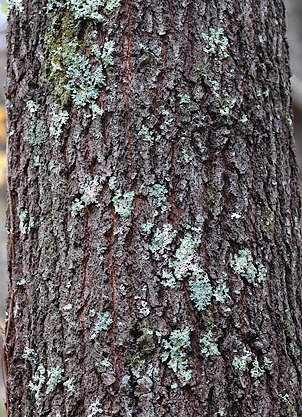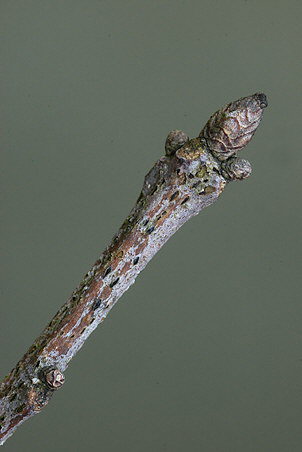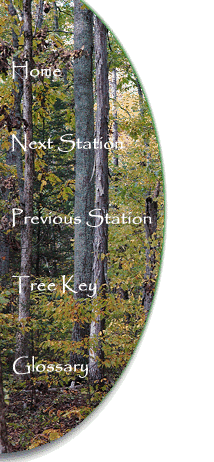| |
|
| |
 |
| |
Southern Red Oak Leaf |
Identification:
Look for the distinctive leaves of the Southern Red Oak beneath the
station tree. The leaves are
alternate,
simple, 5 inches to 9 inches in length,
and 3 to 7 lobed. Underside of leaf densely covered with
minute gray hairs. The sinuses are nearly to
mid-rib, and the lobes are bristle-tipped. Note the "U" -shaped base.
Note
the alternate branching on this tree.
| |
|
 |
|
|
Southern Red Oak Bark |
The bark of the Southern Red Oak is
dark brown to almost black, becoming deeply fissured on older trees.
| |
|
| |
 |
| |
Southern Red Oak Twig |
The twigs of the Southern Red Oak
are orange-brown to dark red and smooth. The
terminal bud is
1/4 inch long, pointed and reddish brown.
Other Uses
and Lore:
Also called the Spanish oak, the southern red oak is
actually unlike any oaks in Spain.
The
species name, falcata, comes from the Latin falcatus, meaning
scythe, and refers to the scythe-like form of the terminal blade of
the leaf. The course-grained, light red wood is used for general
construction, crates and furniture.
It graces the grounds of
Mount Vernon, and grows at
Yorktown and at
Appomattox.
The
acorn is higher in tannic acid than the acorn of the chinquapin oak
and for that reason it was not used for food by the Native
Americans. Wildlife tolerates the higher acid content, however, and
it is said to be excellent for wild turkey, squirrels, mice,
raccoons and deer.
The
Trail From Station Eleven to Station Twelve
 |
|
Spring Peeper |
As you get into
the bottomland area near the river, be sure to listen for the short
high note of the Spring Peeper. These frogs begin calling
quite early in the year and it is not uncommon for them to be
calling on milder February days. They will continue to call well
into the summer months. The trail ends at Station Twelve.
|

